6 Traditional Dishes Tourists Tend to Skip And 10 Must-Try European Classics You Shouldn’t Miss

Europe is a culinary wonderland, but not every traditional dish makes it onto a tourist’s plate. Some get overlooked because they seem unfamiliar, too rustic, or just not Instagram-worthy. But hidden behind the lesser-known names are deep flavors, cultural stories, and seriously satisfying meals. Here’s a breakdown of which dishes travelers often pass up—and which European classics you should absolutely seek out on your next adventure.
1. Haggis (Scotland)

Haggis might sound daunting, being a mix of sheep organs, oats, and spices. Yet, this Scottish dish holds a deep-seated place in Scotland’s culinary tradition. With rich, earthy flavors, it is often served with neeps and tatties (turnips and potatoes). Despite its reputation, haggis is celebrated during Burns Night, honoring the poet Robert Burns. Tourists often miss out due to preconceptions, but it’s a slice of Scotland’s heart. Exploring beyond its ingredients reveals a warming, comforting meal that’s both flavorful and part of Scottish identity. The experience is worth the culinary adventure.
2. Labskaus (Germany, especially Hamburg)
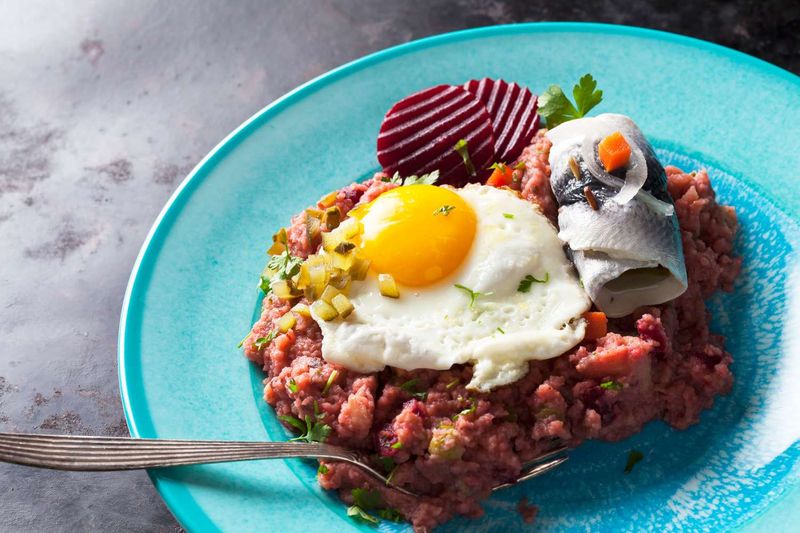
Labskaus is a quintessential dish from Northern Germany, particularly Hamburg. This rustic combination of corned beef, potatoes, and beets, crowned with a fried egg, is not for the faint-hearted. Its appearance may raise eyebrows, but its hearty, salty flavors tell a story of maritime life. Sailors once relied on its nourishing qualities during long voyages. Tourists often skip this unassuming dish, missing out on its comforting richness. Each bite delivers a taste of history, evoking images of rugged sailors braving the North Sea. Labskaus is a dish best understood through experience rather than appearance.
3. Callos a la Madrileña (Spain)
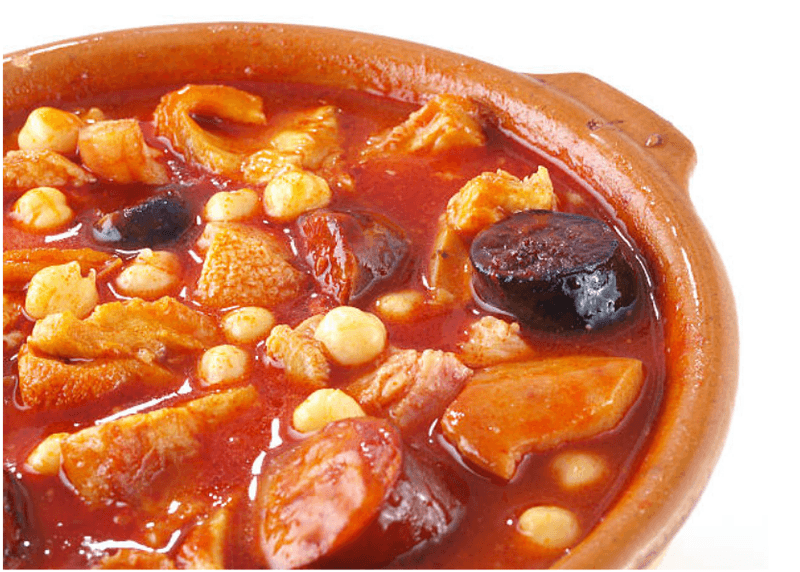
Callos a la Madrileña is a beloved dish in Madrid, though tourists often shy away from it due to its use of tripe. This hearty stew combines tripe, chickpeas, and spicy chorizo, creating a warming embrace of flavors. It’s a dish steeped in tradition, often enjoyed during festive gatherings. While the inclusion of organ meats might deter some visitors, those who try it are rewarded with a taste of Madrid’s soul. The stew’s complex flavors speak of culinary artistry. Experiencing Callos is like joining a family table in the heart of Madrid.
4. Soused Herring (Netherlands)

In the Netherlands, soused herring is more than just a snack; it’s a cultural experience. Served with onions and pickles, this raw, brined fish surprises many with its mild, buttery taste. Tourists often skip it, wary of its raw nature, yet locals relish it as a beloved street food. Traditionally celebrated during Vlaggetjesdag (Flag Day), it marks the start of the herring season. Eating soused herring in Amsterdam connects you to a culinary heritage that’s both simple and profound. It’s a taste of Dutch history, capturing a legacy of seafaring and trade.
5. Jellied Eels (England)
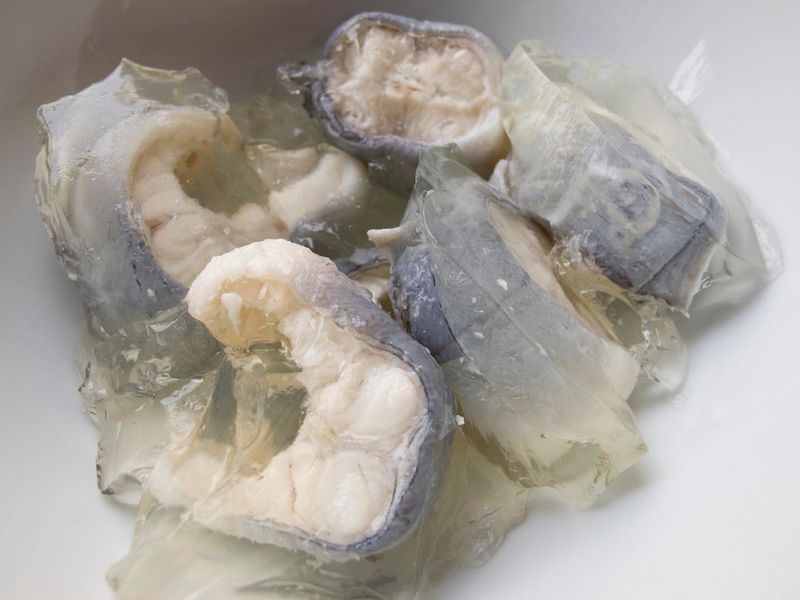
Jellied eels are an East London classic that many tourists overlook. This dish, served cold with gelatinous eels, has its roots in the working-class communities along the River Thames. Despite its unusual texture, it offers a taste of London’s history. These eels were once an affordable staple, sustaining families in lean times. Today, it’s an acquired taste, but for those adventurous enough, it’s a culinary time capsule. Jellied eels speak of resilience and tradition. Sampling them is like stepping into London’s past, tasting the legacy of its river’s bounty.
6. Trippa alla Romana (Italy)
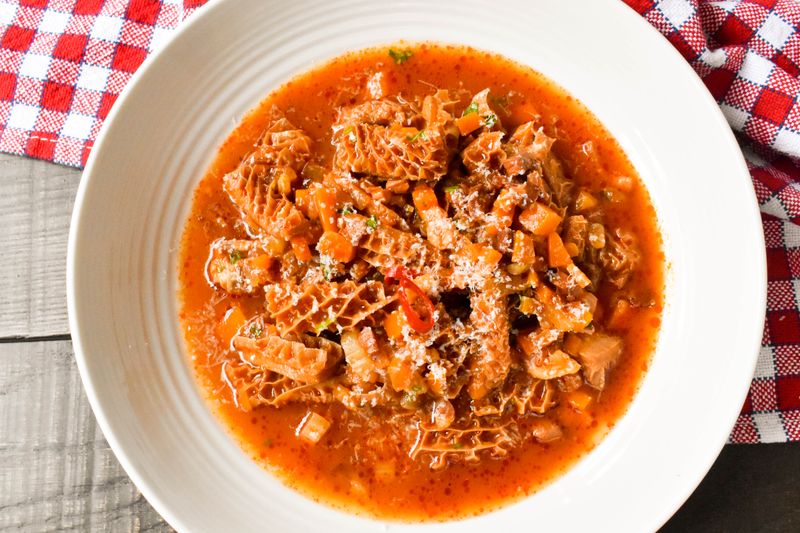
Trippa alla Romana is a dish of contrasts, loved in Rome but often avoided by tourists. It features tripe stewed in tomato sauce with mint and pecorino cheese. Its tender texture and vibrant flavors offer a compelling taste of Roman tradition. While tripe is not universally loved, those who try it find an authentic slice of Italian cuisine. Once a peasant dish, its rich flavors now appeal to those curious about Italy’s culinary heritage. The dish invites diners to savor a Rome of the past, where each bite tells a story of ingenuity and warmth.
7. Paella (Spain)
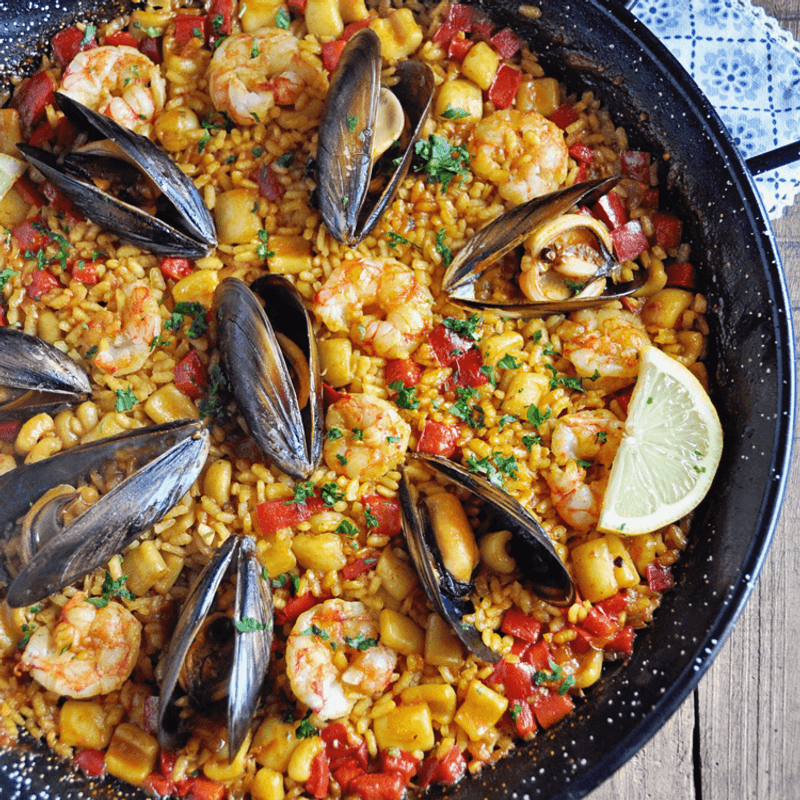
Paella is a Valencian masterpiece, renowned for its saffron-laced rice and diverse ingredients. Whether packed with seafood, meat, or vegetables, each paella tells its own story. Originating in Spain’s coastal region, it’s a dish that embodies community and celebration. Cooking paella outdoors is a cherished tradition, drawing friends and family together. Its vibrant colors and rich flavors create a sensory feast that’s both inviting and satisfying. For travelers, paella is a must-try. It offers a culinary journey into Spain’s heart, where every forkful reveals layers of culture and heritage.
8. Wiener Schnitzel (Austria)

Wiener Schnitzel, with its crispy, golden exterior, is a hallmark of Austrian cuisine. This thinly pounded veal or pork cutlet is traditionally served with a slice of lemon and parsley. Its simplicity belies the skill required to perfect its texture and taste. Originating from Vienna, the dish has become synonymous with Austrian culinary pride. For many, enjoying a Wiener Schnitzel in a Viennese café is a rite of passage. Its satisfying crunch and delicate flavor embody the essence of Austria’s culinary elegance. It’s a dish that delights with every bite.
9. Coq au Vin (France)

Coq au Vin is a testament to rustic French culinary artistry. This dish involves chicken braised in red wine, mushrooms, and pearl onions, delivering a deep, comforting flavor. Its origins lie in the countryside, where it was a practical way to tenderize tough rooster meat. Today, it’s celebrated as a classic, evoking images of cozy French kitchens and leisurely meals. The dish’s richness is enhanced by the slow cooking process, allowing each element to blend harmoniously. Coq au Vin invites diners to experience the heartwarming simplicity of French rural life.
10. Moussaka (Greece)
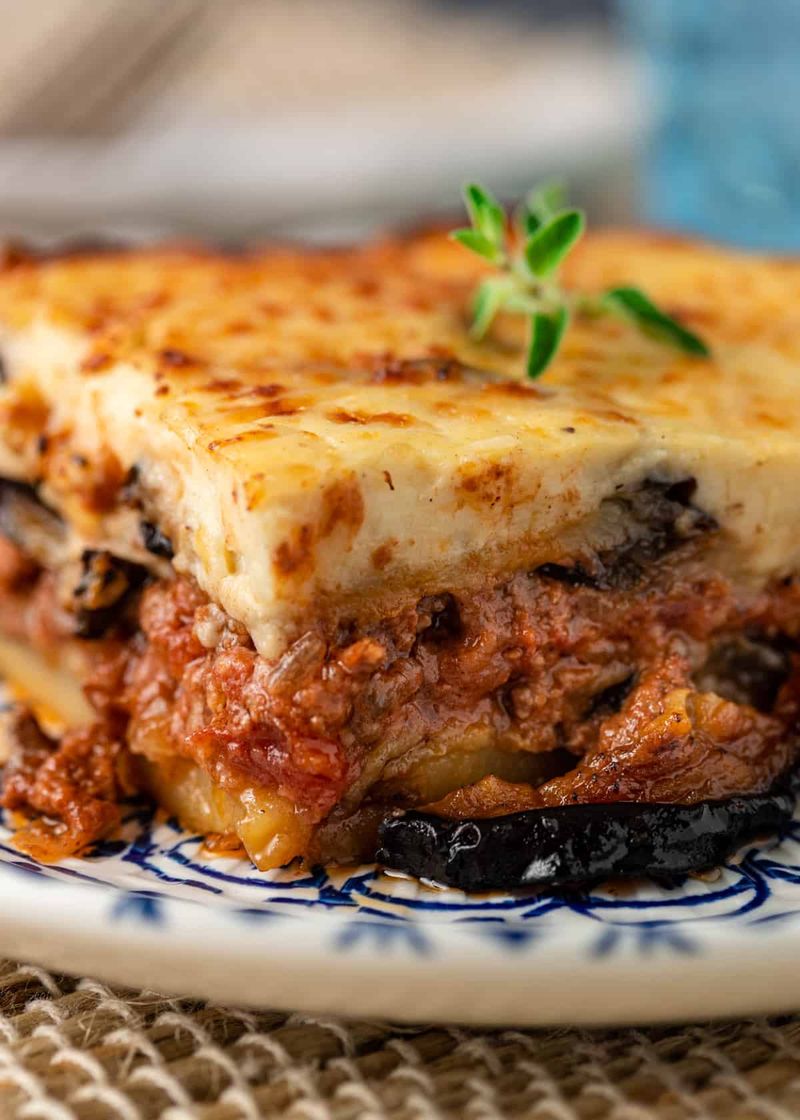
Moussaka is a rich, hearty dish that captures the bold flavors of the Mediterranean. With layers of eggplant, seasoned ground meat, and creamy béchamel sauce, it’s a staple in Greek cuisine. The dish’s warmth and complexity make it a favorite for familial gatherings. Each layer offers a different texture, creating a symphony of taste and aroma. Moussaka embodies the Greek spirit of hospitality and communal dining. For tourists, it provides an authentic taste of Greece’s culinary soul, where tradition and innovation meet on the plate, offering comfort and delight.
11. Pierogi (Poland)
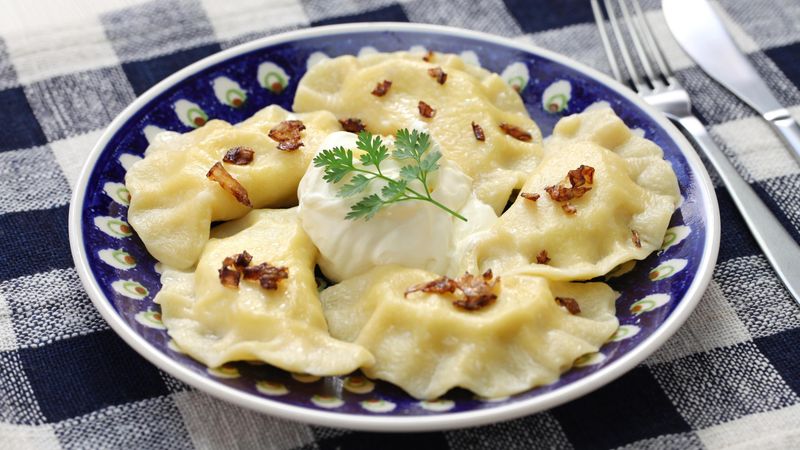
Pierogi are more than just dumplings; they are a symbol of Polish comfort food. Stuffed with potato, cheese, meat, or fruit, they are versatile and deeply satisfying. Whether pan-fried or boiled, pierogi are a staple at Polish dinner tables. Each bite offers a reminder of home and tradition. They’re often accompanied by sour cream or onions, enhancing their flavor. For visitors, trying pierogi is like receiving a warm embrace from Polish culture. It’s a culinary journey through Poland’s heartland, where each variety tells a story of regional pride and family recipes.
12. Goulash (Hungary)

Goulash is a Hungarian treasure, a deeply spiced beef stew enriched with paprika’s warmth. It’s a dish that speaks of home, with its comforting, hearty nature. Traditionally, it’s served with noodles or bread, making it a satisfying meal for those cold European nights. Goulash’s origins trace back to shepherds, who prepared it over open fires. Today, it’s celebrated as Hungary’s national dish, embodying the country’s culinary identity. For tourists, experiencing goulash is essential. It offers a taste of Hungary’s vibrant flavors, where history and tradition simmer together in harmony.
13. Bouillabaisse (France, Marseille)
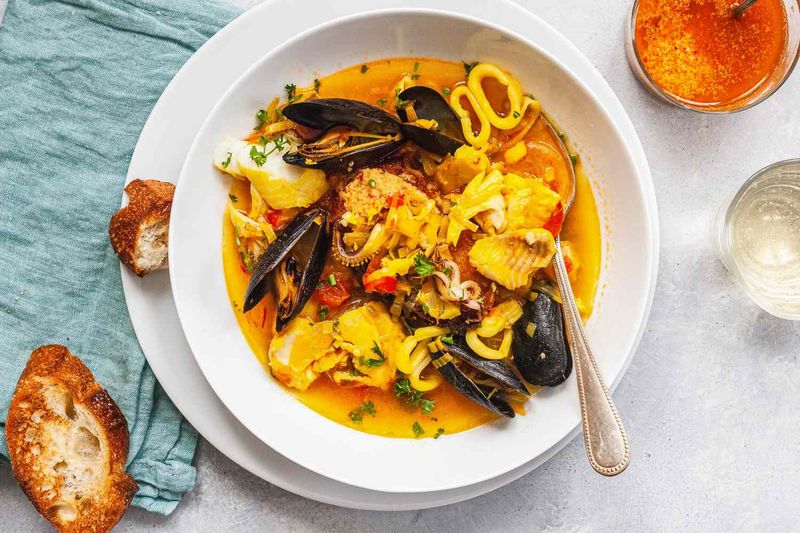
Bouillabaisse is a complex, coastal delight from Marseille, brimming with seafood and Provençal flavors. This fish stew is traditionally served with crusty bread and rouille, a garlic saffron mayonnaise. Its origins lie with local fishermen, who used unsold fish to create this flavorful dish. Bouillabaisse is more than a meal; it’s an experience of the Mediterranean’s bounty. The dish’s layers of taste are a testament to culinary craftsmanship, where each ingredient shines. For those visiting France’s south coast, indulging in Bouillabaisse provides a sensory journey into the heart of Provençal life.
14. Rösti (Switzerland)

Rösti is Switzerland’s answer to hash browns, a golden, pan-fried delight. Originally a farmer’s breakfast from the Bern region, Rösti has become a national favorite. Its crispy exterior and soft interior make it a comforting dish, often topped with cheese or eggs. Each bite evokes the rustic charm of the Swiss Alps, where hearty meals are a way of life. Tourists find Rösti irresistible, a simple yet satisfying taste of Swiss tradition. It’s a dish that offers warmth and familiarity, inviting diners to savor Switzerland’s culinary heritage and alpine spirit.
15. Borscht (Ukraine/Russia/Poland)
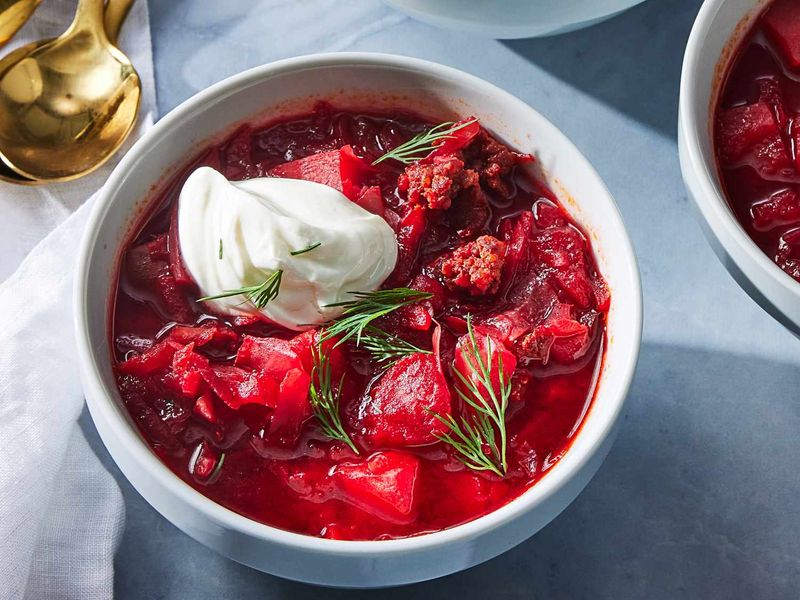
Borscht is more than just a soup; it’s a celebration of Eastern European tradition. This vibrant beet soup, served hot or cold, is often accompanied by sour cream and dill. Each spoonful offers a tangy, earthy flavor that’s as comforting as it is invigorating. Borscht’s roots run deep in Slavic culture, symbolizing family gatherings and festive occasions. It’s a dish that crosses borders, loved in Ukraine, Russia, and Poland alike. For travelers, tasting Borscht is an invitation to explore Eastern Europe’s culinary landscape, where simplicity meets profound flavor in a bowl.
16. Tortellini in Brodo (Italy, Emilia-Romagna)
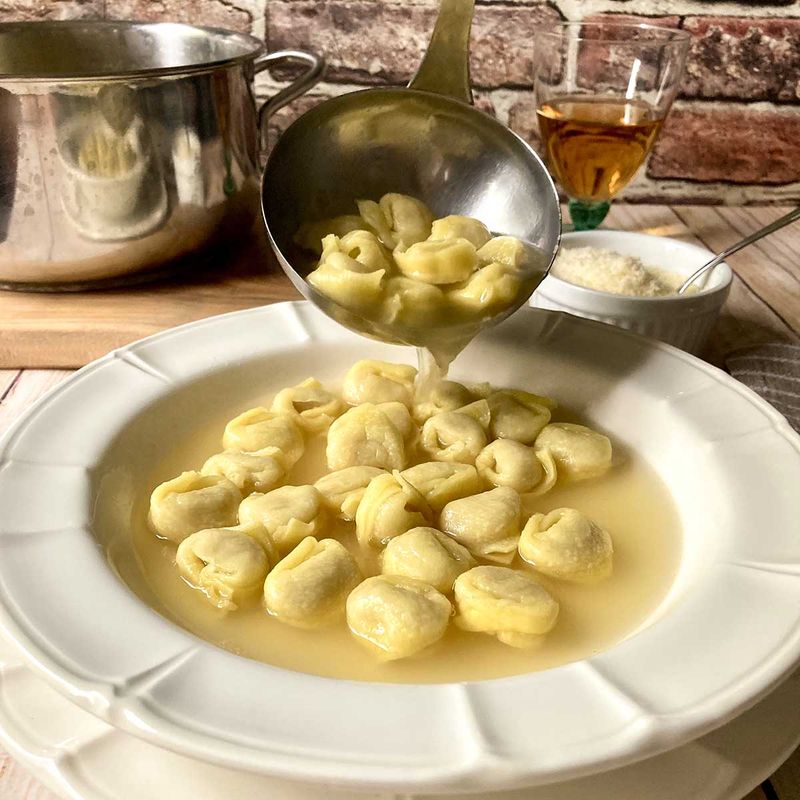
Tortellini in Brodo is a dish of elegance and simplicity from Italy’s Emilia-Romagna region. Tiny, stuffed pasta floating in rich broth, it’s a testament to Italian culinary finesse. Each tortellino is a pocket of flavor, crafted with care and tradition. The dish’s roots are steeped in regional pride, often served during special occasions. For diners, Tortellini in Brodo offers a journey into Italy’s culinary heart, where each spoonful is a blend of history and taste. It’s a dish that warms the soul, inviting you to experience the comfort of Italian hospitality.
